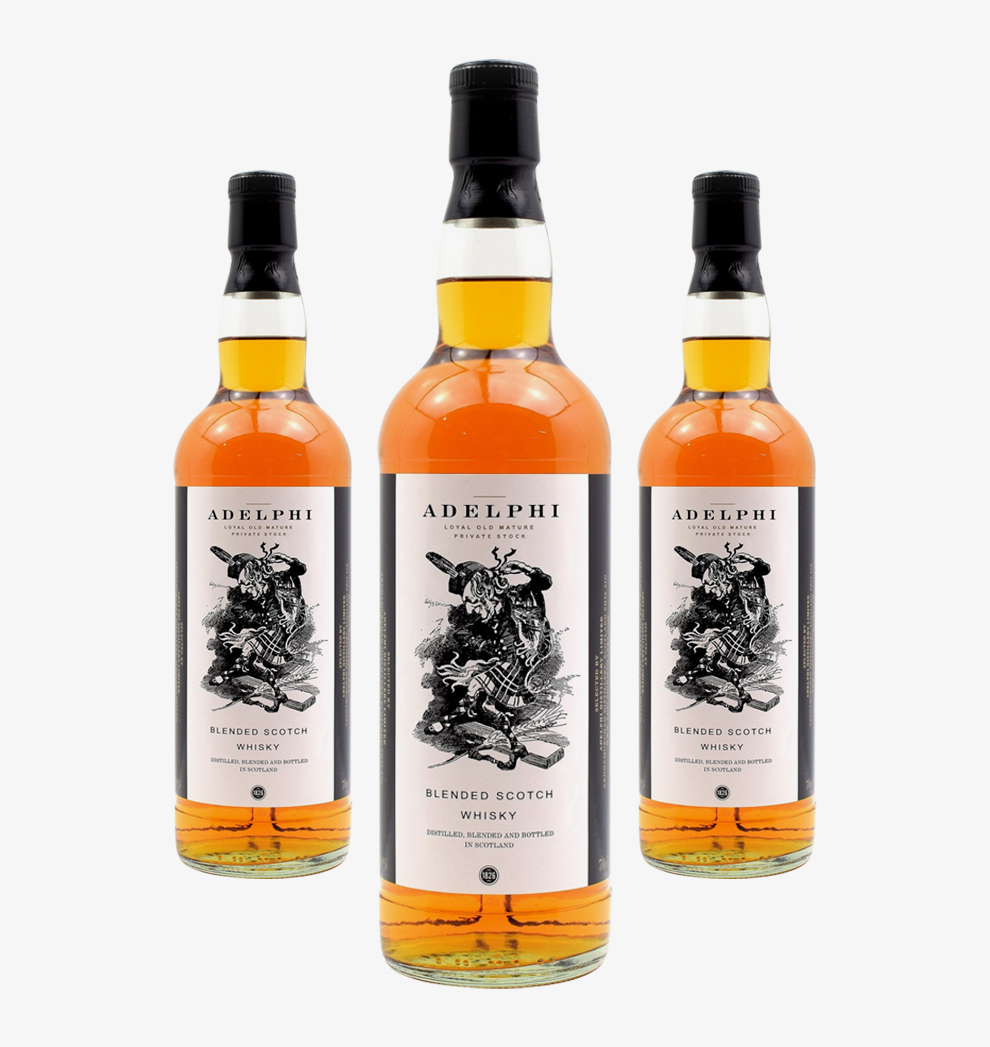It became very apparent by 2007 that demand was increasing for everyone in the industry and, as a result, supply (especially of older stocks) was decreasing just as rapidly. Adelphi, therefore took the decision to build its own distillery in Ardnamurchan, and return to its roots. Several years of planning, collecting much needed advice, signing contracts for equipment and raw materials, and finding the right construction team led to an official opening of the brand new Ardnamurchan Distillery on the 25th July 2014.
Adelphi Selection who we are
Adelphi Ethos
We exist to identify the very small number of casks that have produced the ultimate whiskies. The criteria for selection include rarity and maturity, but above all flavour. Adelphi whiskies are both rare and sought after.
Each single cask of whisky matures its contents very differently, imparting its own character to the whisky it holds and, as a result, there are never two Adelphis quite the same.

Adelphi Selection
Adelphi bottles straight from the cask without colouring or chill-filtration. This allows the true and unadulterated flavours of the whisky to remain locked in, until released into the glass – with each bottling limited, by the size of the cask to between 100 and 700 bottles.
Identifying only the very best casks allows us to offer a range of styles and regions with our panel of professional ‘noses’ chaired by world authority on Scotch whisky and Master of the Quaich, Charles MacLean.


Adelphi Process

Adelphi Process
The overall aim of the distillery is to produce the highest quality spirit possible, fill it into the best oak casks that can be found (from both the US and Spain), and mature on-site in the cool, damp climate of Ardnamurchan. Additional time was spent on engineering the first 100% biomass heated distillery in Scotland, fuelled by locally harvested wood chip. It was also very important that there should be choice and control of the barley growing – so far the majority has all been grown for the distillery next to Adelphi’s bottling warehouse in Fife, so there will be a full circle of farm to bottle.

Adelphi Process
Adelphi designed Ardnamurchan to produce a full-flavoured malt true to its region (West Highland). It produces an unpeated spirit and a peated spirit. The 2-tonne semi-lauter mash is operated with very little raking (only a slight turn to allow for good oil retention). The wort is recycled until fully clear and then moved to one of 4 wooden washbacks or 3 stainless steel. The wooden washbacks are designed to retain a more constant heat in the winter.

Adelphi Process
2 types of distillers yeast are used for the unpeated: Anchor and Fermentis; and just Anchor is used for the peated. 10,000 litres of wash is then passed to the 10,000 litre wash still and from there to the 6000 litre spirit still. The cut is relatively short for peated, and a little longer for unpeated, but run incredibly slowly in both cases. The spirit is then moved to the maturation warehouses and filled into ex-Bourbon barrels from Old Forrester, and ex-Sherry hogsheads and butts supplied from Spain.

Company Mascot
A mid-19th century cartoon of Sir William Gladstone, dancing a jig over an ear of barley. This was to celebrate the passing of a new law which meant that taxes could only be raised on the amount of whisky left in a cask after maturation, and not on the level that it was originally filled to. This meant longer maturation, lower taxes and better quality whisky – an excellent reason to celebrate.

Company Mascot
A mid-19th century cartoon of Sir William Gladstone, dancing a jig over an ear of barley. This was to celebrate the passing of a new law which meant that taxes could only be raised on the amount of whisky left in a cask after maturation, and not on the level that it was originally filled to. This meant longer maturation, lower taxes and better quality whisky – an excellent reason to celebrate.

Blended Scotch Whisky, 40% alc/vol Private Stock
A limited batch release, Solera method, blended Scotch whisky with a high percentage of well-aged malts. A favourite tipple of many whisky consumers, writers and purveyors, this blend has an aroma which presents an interesting meeting of north-east and south-west characteristics; Speyside pear-drops and Islay peat smoke. The mouth-feel is quite remarkably smooth, gentle and well balanced. The tip of the tongue detects traces of salt suggesting Skye; a trace of walnuts; the sweet-dry balance is well contrived and prevents the whisky cloying; the finish is satisfyingly extenuated. The overall impression is full-bodied and civilised; ideal for evening, even post-prandial drinking.

